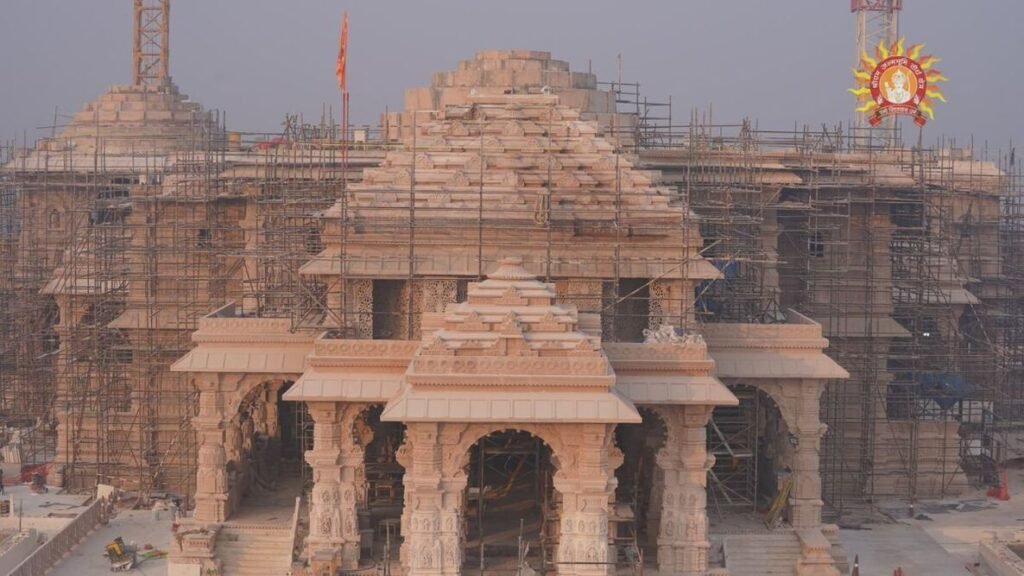
The war showcases the extraordinary valor, righteousness, and unwavering determination of Lord Rama, while Ravana stands as the embodiment of arrogance, lust, and malevolence.
Here are five interesting facts about the war between Ram and Ravana:
- Divine Weapons: Both Lord Rama and Ravana possessed extraordinary weapons. Lord Rama was blessed with divine weapons by various gods, including Lord Brahma, Lord Shiva, and Lord Vishnu. Ravana, too, had powerful weapons obtained through his devotion to Lord Shiva. The battle between them showcased the incredible might of these divine weapons.
- Hanuman’s Role: Hanuman, the devoted ally of Lord Rama, played a crucial role in the war. He displayed his extraordinary strength, agility, and combat skills, striking fear into the hearts of Ravana’s forces. Hanuman’s exploits during the war, including his burning of Lanka and his pivotal role in rescuing Sita, remain legendary.
- Laxmana’s Sacrifice: Laxmana, Lord Rama’s loyal brother, made a remarkable sacrifice during the war. When he was struck by an arrow from Indrajit, Ravana’s son, Laxmana was severely wounded and near death. To save Laxmana’s life, Lord Hanuman was sent to retrieve the Sanjeevani herb from the Himalayas, leading to a race against time and a gripping sequence in the epic.
- Vibhishana’s Betrayal: Vibhishana, Ravana’s younger brother, made a significant decision to defect from Ravana’s side and join Lord Rama’s forces. Vibhishana’s switch of allegiance played a pivotal role in the outcome of the war. His knowledge of Ravana’s strategies and weaknesses proved invaluable to Lord Rama.
- Final Duel: The climactic final duel between Lord Rama and Ravana is a legendary battle. Rama, armed with the divine arrow given by Lord Brahma, struck a fatal blow to Ravana’s chest, finally vanquishing him. The battle symbolizes the triumph of righteousness over evil and the victory of good over darkness.
More interesting facts about the war between Ram and Ravana:
- Duration of the War: The war between Lord Rama and Ravana lasted for a total of ten days.
- Monkeys and Bears as Allies: Lord Rama formed an alliance with an army of monkeys led by Hanuman and a group of bears led by Jambavan. They played crucial roles in the battle, displaying their unique strengths and contributing to Ravana’s defeat.
- Ravana’s Indestructible Armor: Ravana possessed a unique armor, known as the Brahma Kavacha, which made him invincible in battle. It was only through Lord Rama’s arrow that the armor was eventually shattered, allowing Ravana to be defeated.
- Sita’s Abduction: The war was primarily fought to rescue Sita, Lord Rama’s wife, who was abducted by Ravana. Lord Rama’s quest to retrieve Sita became the driving force behind the conflict.
- Divine Intervention: Various gods and celestial beings actively participated in the war, aiding Lord Rama. Lord Hanuman, Indra, Varuna, and other deities fought alongside Rama, utilizing their divine powers to assist in the battle.
- The Battle with Kumbhakarna: Kumbhakarna, Ravana’s brother known for his colossal size and insatiable appetite, fought fiercely against Lord Rama’s forces. It took immense effort to defeat him, but eventually, he was slain by Lord Rama.
- Ravana’s Ten Heads: Ravana’s ten heads symbolize his knowledge and mastery over various subjects. It was believed that cutting off all his heads simultaneously would render him immortal. Hence, Lord Rama targeted and destroyed each head one by one in the final battle.
- Victory of Good Over Evil: The war between Lord Rama and Ravana is seen as a battle of righteousness and the triumph of good over evil. Lord Rama’s victory signifies the victory of dharma (righteousness) over adharma (unrighteousness).
The war between Lord Rama and Ravana in the Ramayana encapsulates a captivating narrative and holds deep symbolic meaning. These fascinating facts shed light on the significance of this legendary conflict, which serves as a powerful metaphor for the timeless battle between good and evil, ultimately highlighting the victory of virtue and righteousness.



